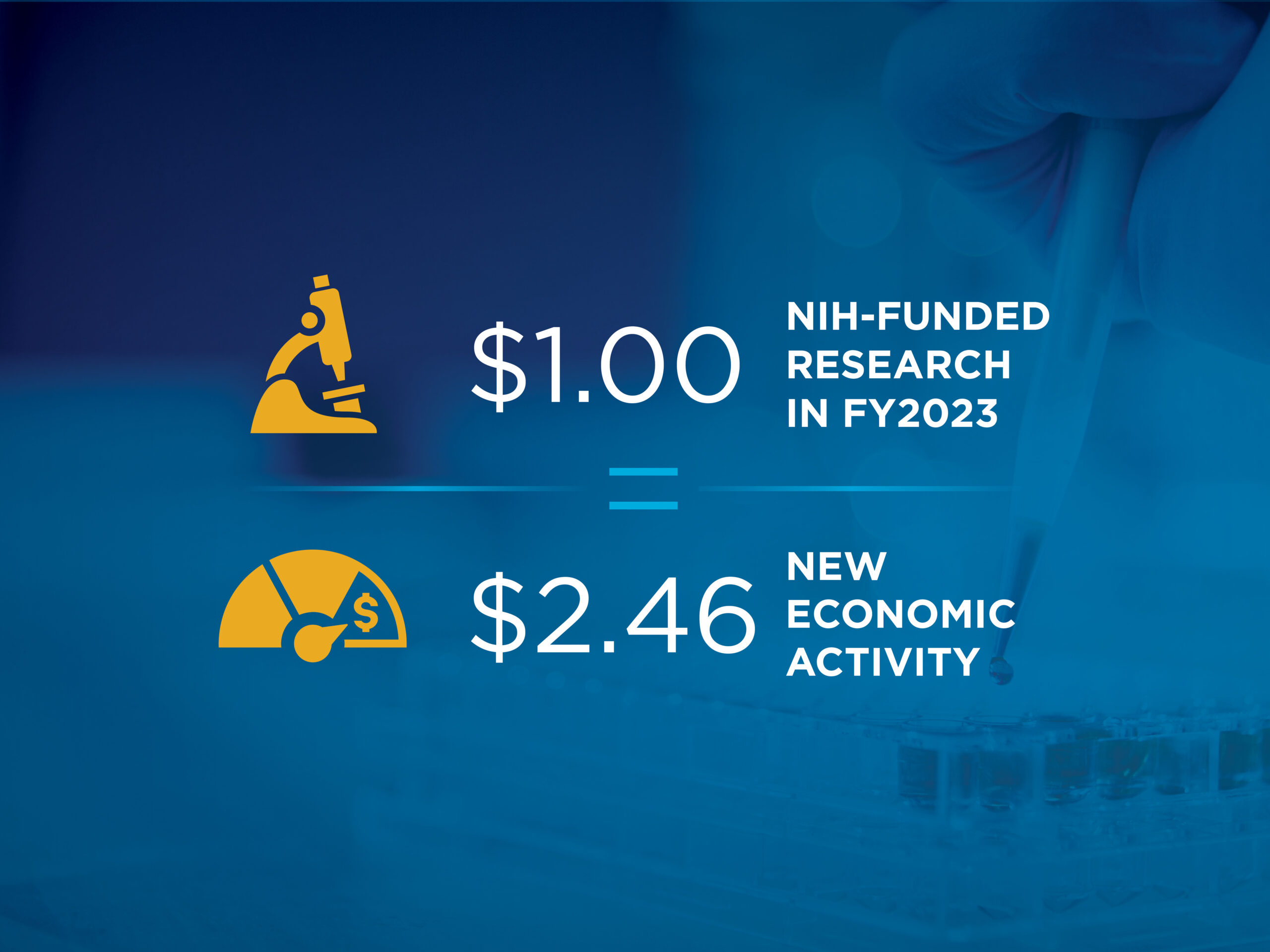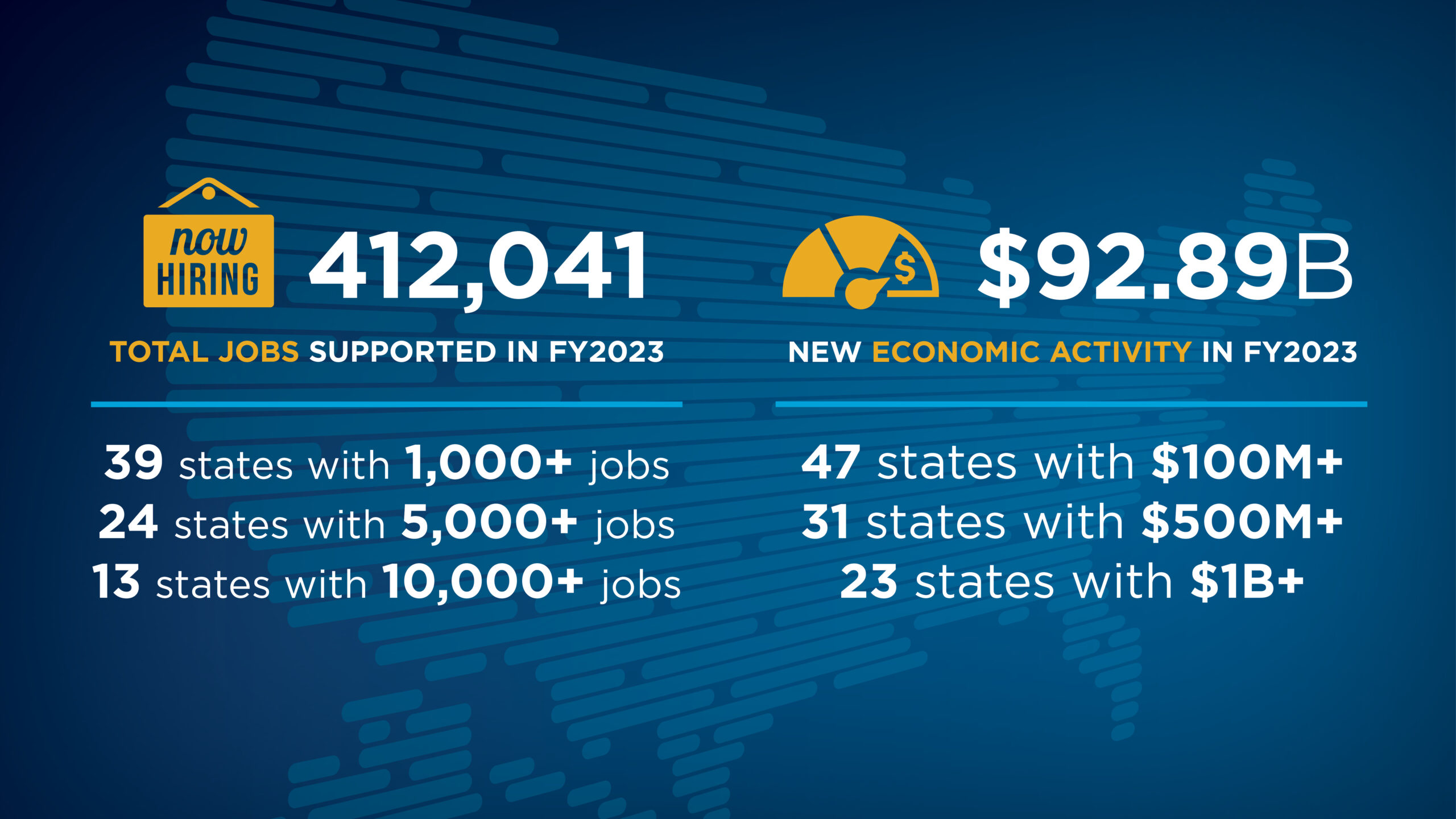In Fiscal Year 2023, the National Institutes of Health (NIH) awarded $37.81 billion in extramural research funding to researchers in all 50 states and the District of Columbia.
According to UMR’s analysis, this funding directly and indirectly supported 412,041 jobs and produced $92.89 billion in new economic activity nationwide — or $2.46 of economic activity for every $1 of research funding.



